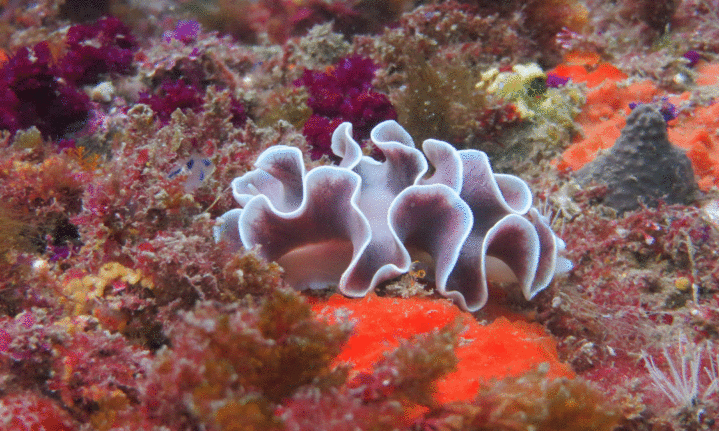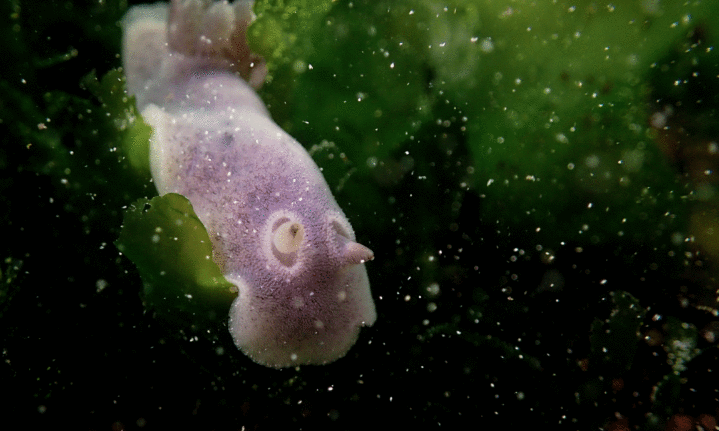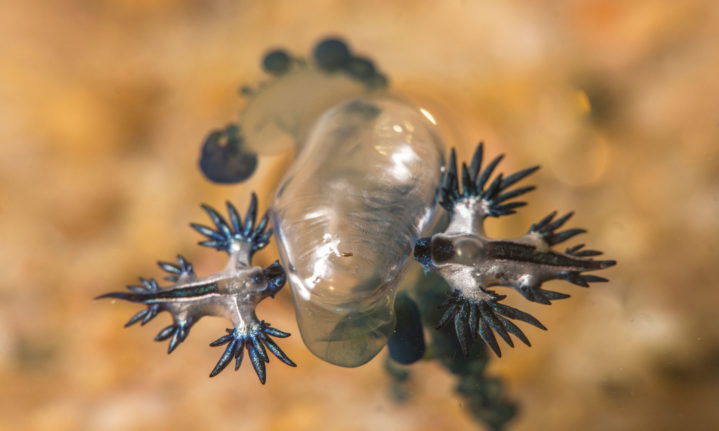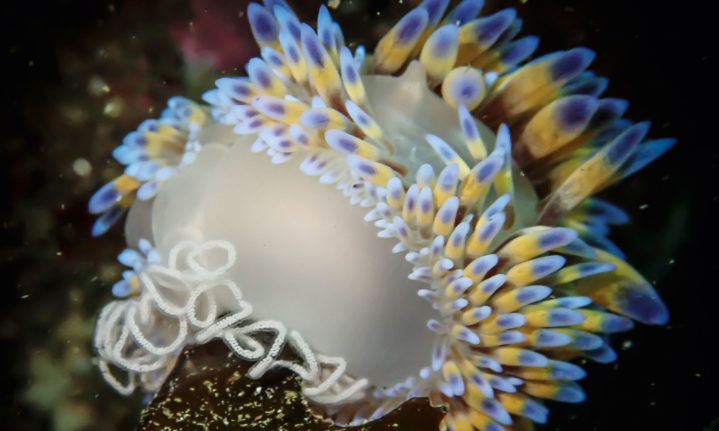On your next seaside holiday, a miniature world of magic awaits – if you know where to look.
Slugs. What invariably springs to mind are chubby, dull, slimy creatures gnawing at newly planted lettuces or trailing their way down doors. But in the ocean, sea slugs – or nudibranchs – are some of the most colourful, flamboyant animals on Earth and have garnered fans around the world – Californians even celebrate International Nudibranch Day on 29 October.
Some nudibranchs resemble psychedelic sheep; others Rio Carnival dancers. There are frilly ones, crystalline ones, shaggy ones and others that would give Lady Gaga a run for her money. Nudibranchs (pronounced ‘noodi branks’) are found in seas all over the globe, from Scotland to São Tomé, from Iceland to Indonesia. The name is derived from the Latin nudus (naked) and Greek brankhia (gills), due to the slug’s lack of a shell (unlike other marine gastropod molluscs) and the gills being found in a rosette on the outside of the body. It’s estimated there are about 500 species in SA, with this figure expected to grow as previously undiscovered or unidentified ones turn up. Nudibranchs are found at depth, but also in shallow water, on reefs and even in tidal pools, which means you don’t have to be Aquaman to spot them. All you need is a mask and snorkel and a pair of eagle eyes, as many are just a few millimetres long.
Six nudibranch fans share their top picks
Favourites
1. The four-colour nudibranch

‘The four-colour nudibranch can be seen in False Bay and up the Southern Cape coast to Knysna and slightly further. Look on the walls of tidal pools or in eel grass in shallow water.’ – Carel van der Colff, scuba instructor
2. Eubranchus
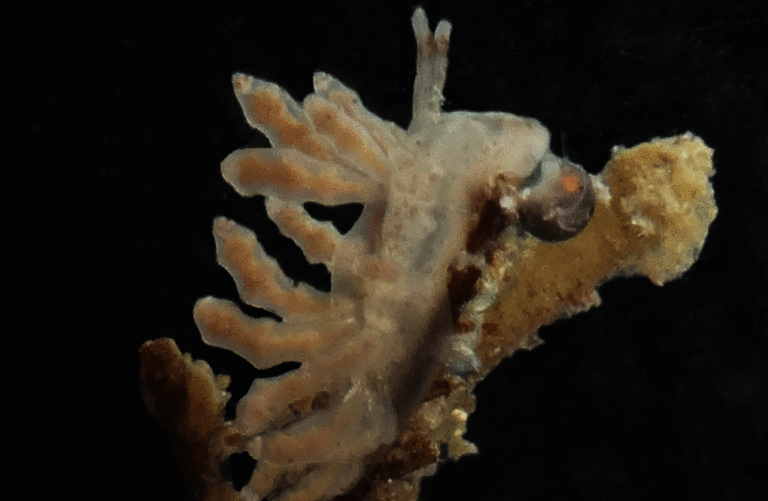
“I love this Eubranchus, which we found in Lambert’s Bay on the West Coast. Its juvenile form is tiny (less than 4mm) and looks like a little sheep.” – Jessica Toms, researcher and conservationist.
3. Frilled nudibranch

“A super-unusual species, only known in Southern Africa and doesn’t look like any other nudibranch in the world,” – Georgina Jones, author and nudibranch guru
4. Velvet dorid

‘With its fuzzy pink “coat”, the velvet dorid is the prettiest. I love that it seems to have a puzzled facial expression – its rhinophores (tentacle-like organs on
top of the head) move in opposite directions.’ – Lisa Beasley, freediving instructor and champion of Cape Town’s tidal pools
5. Sea swallow
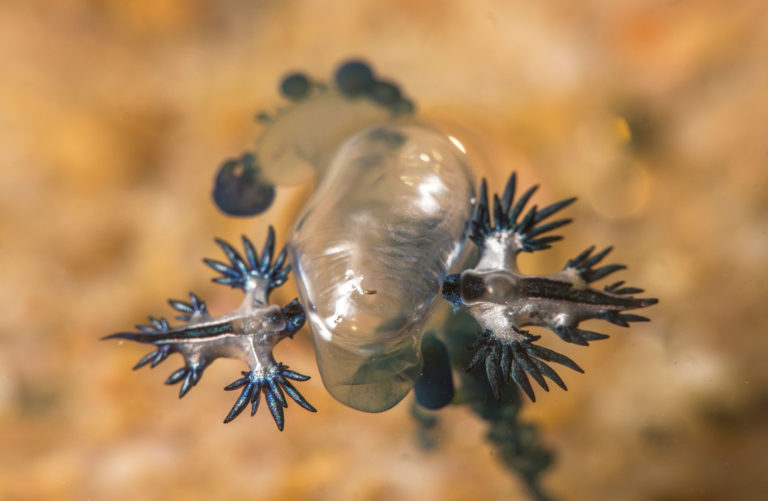
‘I love the sea swallow’s surreal dragon-like appearance.’ Normally found offshore floating on their backs, sometimes they get blown ashore and wash up on the beach or get stuck in tidal pools. They look like, and prey, on blue bottles. – Jenny Stromvoll, under-water photographer
Easiest to spot
6. Cape silvertips
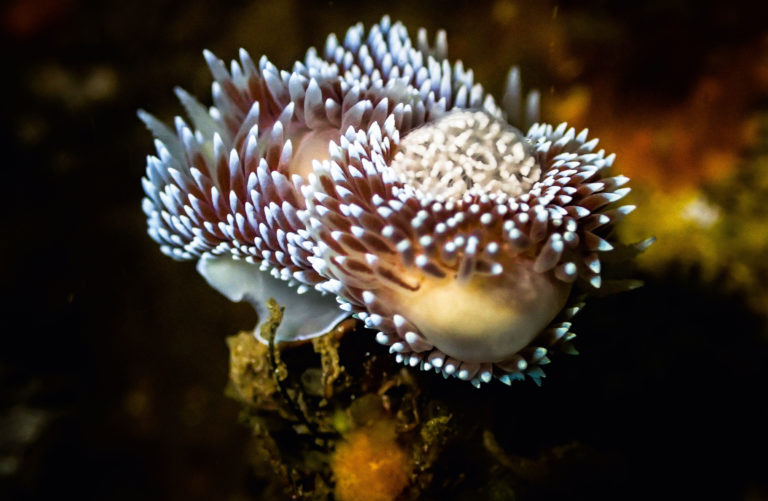
Cape silvertips are the most common and a good place to start for any budding enthusiast.
7. Orange clubbed nudis

Mostly found in the False Bay kelp forests, but also up to Saldanha Bay
and in some tidal pools.
8. The gasflame, plus frilled, silver and variable dorid

There are four species you will always see on a dive around Port Elizabeth, says Evania: the gasflame plus frilled, silver and variable dorid. They are all easy to see and grow to between four and nine centimetres.
Others to look out for are iridescent nudibranchs (‘Super-easy to find,’ says Georgina), five species of polycera (‘Look in rock pools and deeper waters,’ says Jessica) and halgerda (‘They are regular visitors to our local tidal pool in Ponto do Ouro,’ says Jenny).
Harder to find
9. Baeolidia mobeii
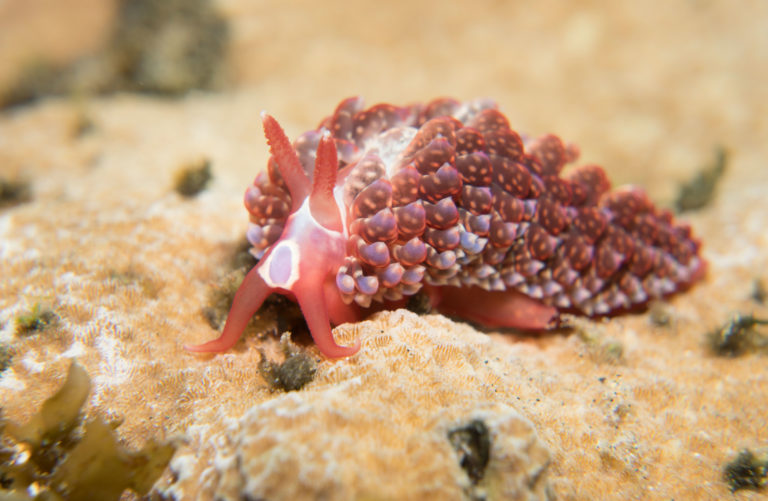
Preys on anemones and is extremely hard to spot, specially in tidal pools. ‘It mimics anemones to perfection,’ says Jenny.
10. Candy nudibranchs

These are quite tricky to find, and even trickier to photograph because of their tiny size.
Others to look out for are Flabellina sp.1 – very rare, though it popped up quite frequently on Jessica’s West Coast dives – and the three-spot.‘I’ve only seen it three times. I have no idea why it’s so rare (possibly its food source is scarce) but finding it is exciting,’
says Georgina.
Nudi-hunting tips
• Take it slowly. Most are tiny, so thoroughly scanning just a small area (the wall of a tidal pool) may deliver results.
• Get to know their diet. Many nudibranchs are very specific about what they eat, so familiarise yourself with the different food sources.
• Look out for their eggs. You’ll often find a nudi near an elongated egg ribbon (pictured below, a fiery nudibranch laying eggs).
Why all the colours?
Zoologist Jessica Toms did her master’s degree on the nudibranchs of South Africa and has carried out extensive research along our coastline. She says the colourful and elaborate design of the slugs is all part of their defence arsenal. Some nudibranchs have evolved to synthesise the stinging cells of their prey, subverting them to use as their own weapons. Colouration is often used to blend in – or, in the case of some brightly coloured nudis, to stand out as much as possible to ward off potential predators. Some are able to shed their cerata (dorsal or lateral outgrowths) when threatened, while others are able to ‘suck’ in their sensitive gill branches when in danger.









